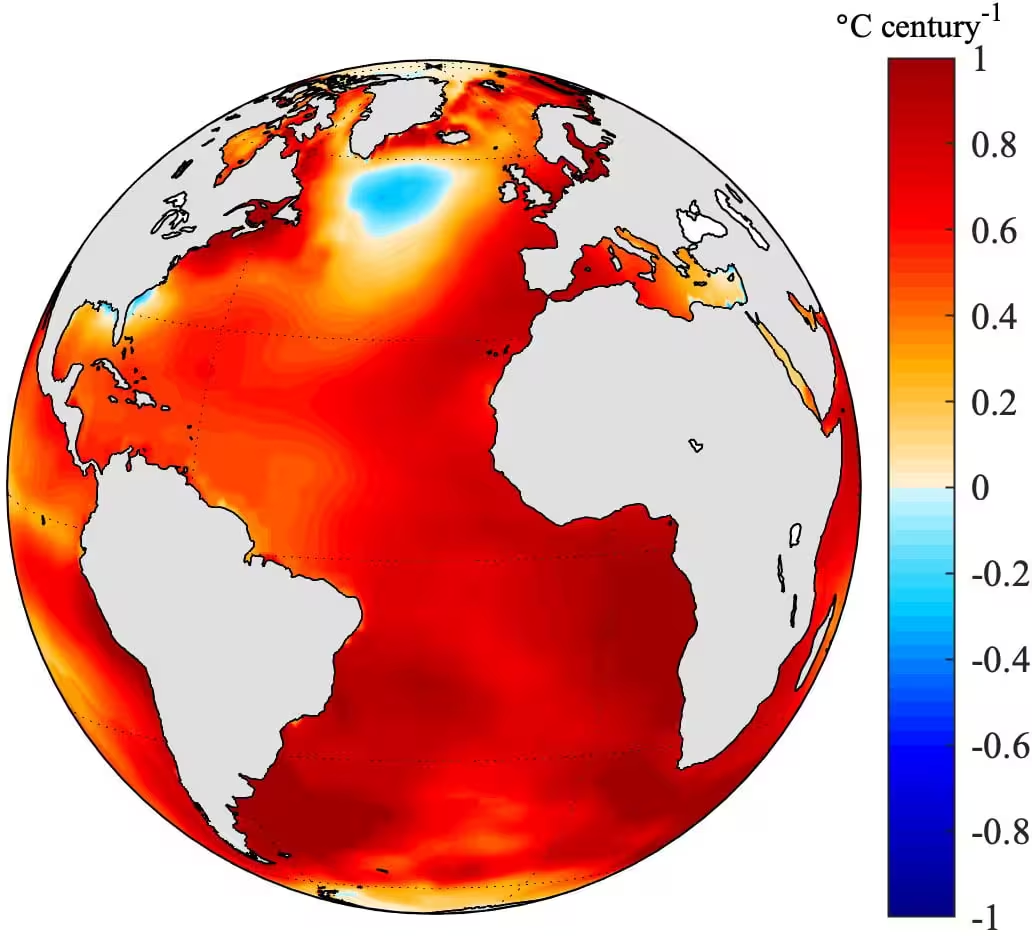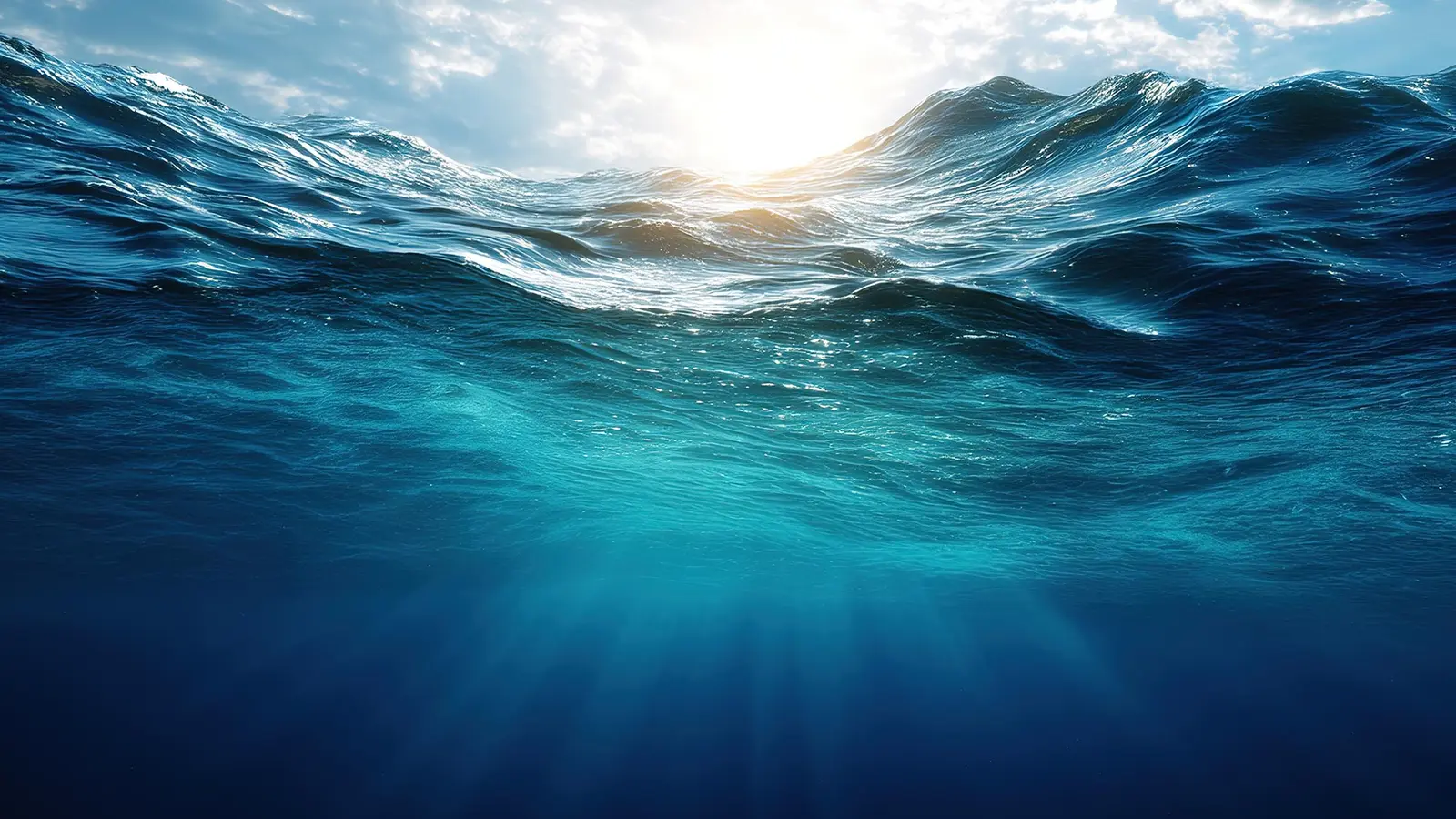6 Minutes
For more than a century, scientists have puzzled over a persistent pocket of unusually cold water south of Greenland that stands out against the overall warming Atlantic. New research from the University of California, Riverside connects this anomaly to a long-term weakening of a major ocean circulation system, with far-reaching consequences for weather, marine life, and climate projections.
Unraveling the South Greenland cold spot
Imagine the ocean as a planet-sized conveyor belt. The Atlantic Meridional Overturning Circulation (AMOC) carries warm, salty water northward near the surface and returns colder, denser water to the south at depth. When that conveyor slows, less heat and salt reach the subpolar North Atlantic — producing the cool, fresher surface conditions observed near southern Greenland.
The cold patch, sometimes called the South Greenland anomaly, has been an outlier in a century-long record of rising sea surface temperatures. Instead of being easily explained by local weather or short-term variability, the feature appears tied to large-scale shifts in ocean circulation. UCR researchers Wei Liu and doctoral student Kai-Yuan Li analyzed a century of temperature and salinity data and tested their reconstruction against nearly 100 climate models to evaluate what could produce such a persistent signal.
Reconstructing a century of ocean change: data and models
Direct, continuous observations of the AMOC exist only for the past two decades, so Liu and Li turned to indirect but robust indicators: long-term records of sea surface temperature and salinity. Salinity is particularly useful because the AMOC transports salty water northward. A sustained drop in salinity alongside cooling points to a reduced northward flow of warm, salty water.
Their method combined observational records — including instrumental ship and buoy data compiled over the 20th century — with rigorous model comparisons. When the team compared these reconstructions with outputs from nearly 100 climate model simulations, a clear pattern emerged: only the models that implemented a weakened AMOC reproduced the observed cooling and freshening in the South Greenland region. Simulations that retained a strong AMOC could not match the real-world signature.

Atlantic sea surface temperature trend between 1900-2005 (color shading in °C) for the average of six observation datasets.
Why a weakening AMOC matters for weather, ecosystems, and forecasts
The AMOC is a major regulator of climate across the North Atlantic, and its slowdown has multiple consequences. First, regional weather patterns can shift: a cooler North Atlantic can alter the track of the jet stream and modify rainfall patterns over Europe and eastern North America. That can mean more persistent storms in some regions, drier conditions in others, and subtle changes in seasonal temperatures.
Second, marine ecosystems are sensitive to changes in temperature and salinity. Species ranges, nutrient distributions, and the timing of biological events like plankton blooms can all shift as water masses change. Fisheries and coastal communities that depend on predictable ocean conditions may face new challenges.
Third, the result helps settle a technical but important modeling debate. Some newer climate models suggested that reductions in aerosol pollution would strengthen the AMOC, implying a different trajectory for the North Atlantic. But those models did not replicate the observed cooling south of Greenland. Liu and Li's comparison suggests that many models are too sensitive to aerosol changes and that a long-term AMOC slowdown better explains the historical record — which improves confidence in forecasts that must account for ocean circulation changes.
What the study reveals about past and future change
By showing consistent links between century-scale temperature and salinity shifts and a weakened AMOC, the study implies the circulation has been declining for more than 100 years. That long-term trend matters because it suggests the system is responding to sustained forcing, including greenhouse-gas-driven warming and freshwater input from melting ice, rather than only to short-term variability.
Importantly, the reconstruction technique used by the researchers demonstrates how indirect observations can fill gaps where direct measurements are limited. With observations of AMOC strength available for only a couple of decades, temperature and salinity records provide a way to infer longer-term behavior and validate model projections.
Expert Insight
Dr. Hannah Reyes, a climate oceanographer at a major research institute, commented: "This study is a strong example of how combining historical ocean records with multi-model comparisons can reveal systemic changes that are otherwise invisible. The South Greenland cold spot is not a curiosity — it is a fingerprint of a larger reorganization of ocean circulation that has practical consequences for weather and marine life."
"Using salinity and temperature together is a powerful approach, because they respond differently to heat and freshwater inputs. That dual signal gives us confidence that the AMOC slowdown is real and sustained," she added.
Implications for monitoring and future research
Tracking the AMOC remains a high priority. Continued deployment of moorings, floats, and satellites, combined with careful archival work on historical ship records, will sharpen our view of how circulation responds to warming, ice melt, and changes in precipitation. Better observational coverage also helps tune climate models so they more reliably capture regional responses tied to the AMOC.
The findings underscore a broader point for policymakers and planners: ocean circulation is not static. A century-scale weakening of the AMOC alters regional climate risks and marine conditions. Understanding these shifts gives societies a better chance to anticipate impacts on agriculture, infrastructure, fisheries, and water resources.
As researchers refine methods and expand observational networks, the South Greenland cold spot will remain a sentinel feature — a geographic clue that helps scientists read the ocean’s long-term changes and improve projections of what is likely to come.
Source: scitechdaily


Leave a Comment